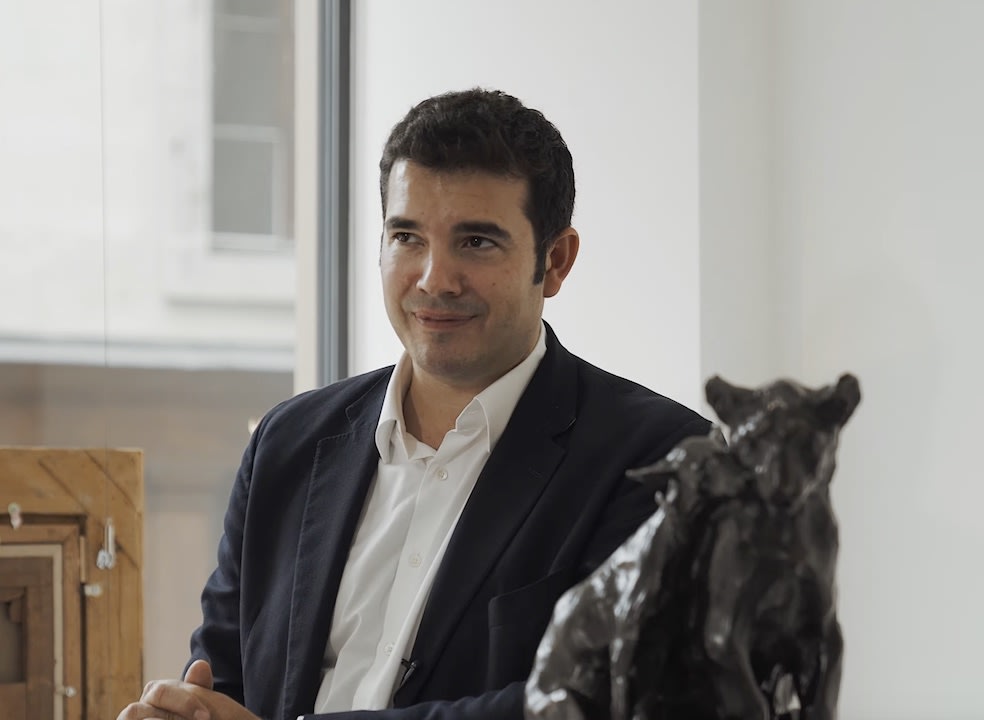It was in Antwerp in early 1906 that Bugatti moulded this remarkable bronze. The sculpture represents a sitting greyhound rubbing affectionately up against a lion cub. The tenderness that this work conveys is striking. Véronique Fromanger describes its origins thus: "As soon as he arrived in Antwerp in 1906, Bugatti got on very well with the main keeper in the big cat section. Frans Franckx's only aim was to ensure the well-being of "his" animals. He readily agreed to Rembrandt joining him on his daily rounds and allowed him to approach the felines and pet the lion cubs. In a photo from that period, Bugatti is holding one in his arms with the same tenderness in his eyes as if it were a child (fig.1). So that he wouldn't be lonely, or bored, the lion cub shared his cage with a dog until he reached adulthood. Bugatti enjoyed incredible experiences and then set them in plastiline: the lion cub and the greyhound are nestling up to one another or the greyhound is playing at hiding between the paws of the young lion."
This model only exists in the original plaster and three, numbered copies. The plaster is listed in the Alain Delon collection. The first copy has not yet been catalogued while the second is to be found in the Muse?es Royaux des Beaux-Arts of Brussels collection. The third of these three versions is our bronze.
This masterpiece shows all Bugatti's love and tenderness for animals. First and foremost a "narrator of animal psychology", Bugatti placed great importance on realism and his vigorous modelling is evident in the thumb marks particularly visible on the neck of the lion cub and on the base. Bugatti maintained a carnal relationship with the material which comes through especially in the great care taken over the ciselure and the patina, as we can see in this masterful work created at the height of his career.

